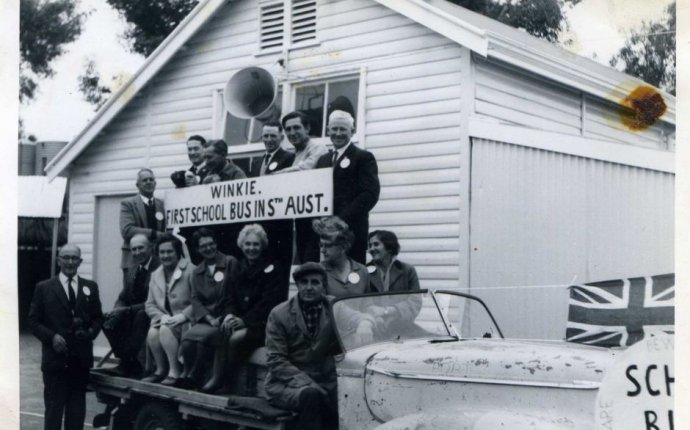
Winkie South Australia
Cobdogla started out as part of the Cobdogla Station with the homestead being built on the site of the current Cobdogla Station Caravan Park. This lease was taken out by the Chambers family in 1846. The station once covered over 200 miles (over 500 km) of river frontage. The first police greys were bred on the property and the famous explorer John McDouall Stuart used "Circle C" horses from here for his journey across Australia from north to south.
Note: Cobdogla features an interesting Steam Museum and display as well as the world's only working Humphrey Pump.
GLOSSOP:
Glossop is named after Captain Glossop of the H.M.A.S. Sydney which sank the German vessel Emden in World War 1. Surveyors began surveying the area in 1918-19 and the town was gazetted in 1921. The area was first planned as part of the Berri Irrigation Area and became part of the soldier settler scheme when the Government realised that thousands of returned soldiers would need rehabilitation.
LOVEDAY:
Proclaimed in 1940, Loveday was the site of one of Australia's largest internment camps during World War 2. At it's peak it housed 5, 380 internees of German, Japanese and Italian descent as well as over 1, 500 Australian Military personnel. The camp supplied a variety of products including wheat, vegetables, fruit and seeds. It also grew opium poppies. These were used for the production of morphine required medicinally by the Armed Forces. The ruins for the WW2 Internment Camp still remain.
MONASH:
Monash was originally known as "Lone Gum" with reference to the solitary Red River Gum that still grows amongst the vines so far away from the Murray River. Named after World War 1 army commander General Sir John Monash, it was proclaimed in 1921. It was developed as a subdivision of Berri where there was an influx of returned soldiers to the area after World War 1.
OVERLAND CORNER:
Overland Corner became famous from 1838 as a river crossing and stopover for overlanders moving from the Eastern States to South Australia. In 1860 Overland Corner was on the Wentworth mail route from Adelaide. A telegraphic communication line between Adelaide and Sydney was erected in 1865 and passed through Overland Corner. Traffic along the overland trail increased with the construction of the railway at Morgan in 1878. The hotel built in 1859 was one of the first stone buildings constructed in the Riverland. This was the stagecoach post for Cobb and Co. and has been restored by the National Heritage Trust of South Australia who also own it.









